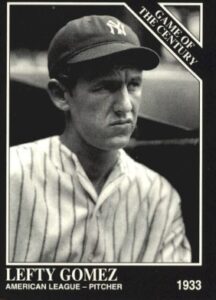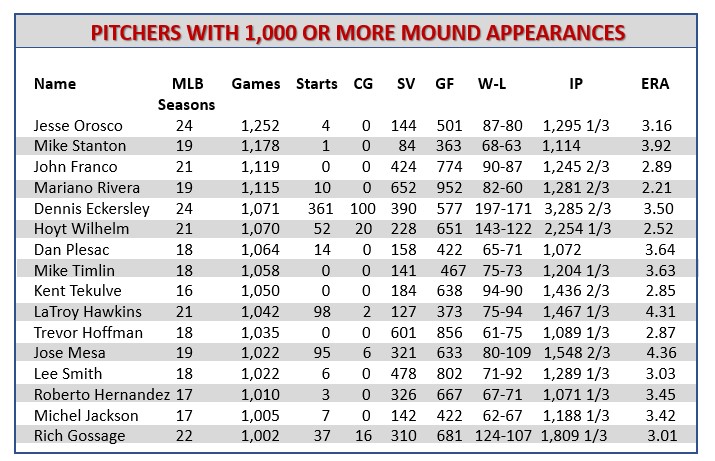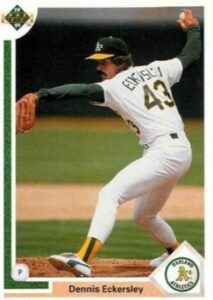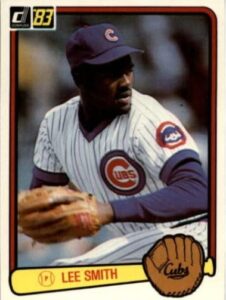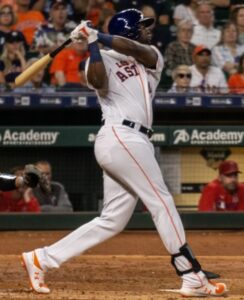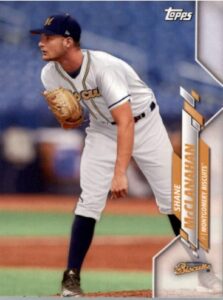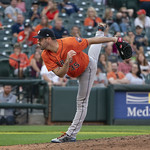 On this date (July 26) in 1935, Ed “Babe” Linke – in a truly “heads up” play – started one of the most unusual double plays in MLB history. Not only that, the play seemed to give him a head start (or jump start) to his best-ever MLB campaign.
On this date (July 26) in 1935, Ed “Babe” Linke – in a truly “heads up” play – started one of the most unusual double plays in MLB history. Not only that, the play seemed to give him a head start (or jump start) to his best-ever MLB campaign.
That day, the 23-year-old started (in New York) on the mound for the Senators (fighting to stay out of last place)) versus the Yankees (trailing the first-place Tigers by 1 1/2 games). Linke came into the game 3-6, 7.60), while his mound opponent, Johnny Broaca was 8-3, 3.15. He had no idea he was soon to start a unique double play – with his head.
Linke was wild from the start, walking the bases loaded with one out in the first frame (3B Red Rolfe, RF George Selkirk, 1B Lou Gehrig), but escaping without a Yankee run (striking out C Bill Dickey and getting SS Tony Lazzeri on a ground out.) The Senators had tallied once in the top of the first and added a second run in the top of the second, so Linke was staked to a 2-0 lead as he took the mound in the bottom of the second inning. Little did he know where his afternoon was headed. If he had, he might have left the mound.
In the bottom of the second, with one out, Yankee lead-off hitter and left fielder Jesse Hill smashed a line drive off Linke’s forehead. The ball hit the right-handed hurler with such force it ricocheted back to Senators’ catcher Jack Redmond, who caught it on the fly and fired to Senators’ shortstop Red Kress, catching a surprised Yankee base-runner (CF Ben Chapman) off the bag for a 1-2-6 double play – completed as Linke lay semi-conscious on the mound. Linke was carried off the field on a stretcher and spent two days in the hospital before returning to the Senators – to begin the most successful pitching streak of his six-season MLB career. (He was back on the mound just eight days later.)
At the time of the beaning – including that game – Linke’s record on the season was 3-6, with a 7.41 ERA. (He would complete his MLB career at 22-22, 5.61.) However, for the remainder of 1935, after being felled by the Hill liner, Linke went 8-1, 3.18 in 11 starts and three relief appearances. During that time, he also threw seven of his 13 career complete games – including a ten-inning, two-run (one earned) performance against the Indians on August 18 and a twelve-inning, three-run (two earned) outing against the Tigers on September 11.
Linke finished up the 1935 season 11-7, 5.01. (Note; Baseball-References lists Linke’s ERA at 5.01 in his career overview and 5.06 in his 1935 game logs.) The following year, he would go 1-5, 7.10; and would be out of the major leagues by age 27.) The knock on the noggin’ didn’t seem to hurt Linke’s batting eye either, Hitting .259 at the time of the injury, Linke finished the season at .294, with one home run and nine RBI. Clearly, Linke got a head start on his best season on this date 87 years ago.
Primary Resources: Baseball-Reference.com; BaseballRulesAcademy.com; NationalPastime.com
Baseball Roundtable is on the Feedspot list of the Top 100 Baseball Blogs. To see the full list, click here.
I tweet baseball @DavidBaseballRT
Follow/Like Baseball Roundtable’s Facebook Page here. More baseball commentary; blog post notifications; PRIZES.
Member: Society for American Baseball Research (SABR); The Baseball Reliquary; The Negro Leagues Baseball Museum.







